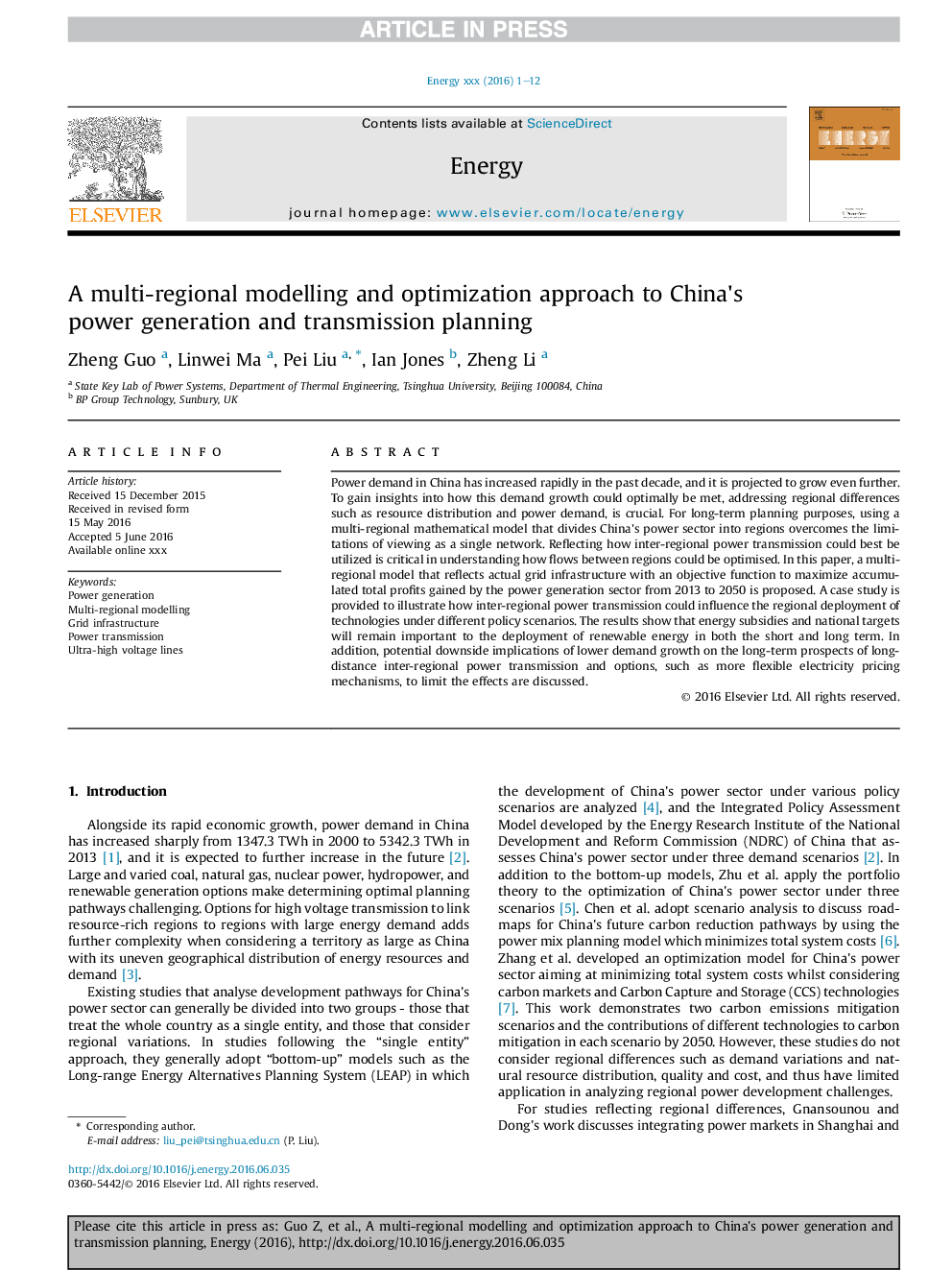| Article ID | Journal | Published Year | Pages | File Type |
|---|---|---|---|---|
| 5477182 | Energy | 2016 | 12 Pages |
Abstract
Power demand in China has increased rapidly in the past decade, and it is projected to grow even further. To gain insights into how this demand growth could optimally be met, addressing regional differences such as resource distribution and power demand, is crucial. For long-term planning purposes, using a multi-regional mathematical model that divides China's power sector into regions overcomes the limitations of viewing as a single network. Reflecting how inter-regional power transmission could best be utilized is critical in understanding how flows between regions could be optimised. In this paper, a multi-regional model that reflects actual grid infrastructure with an objective function to maximize accumulated total profits gained by the power generation sector from 2013 to 2050 is proposed. A case study is provided to illustrate how inter-regional power transmission could influence the regional deployment of technologies under different policy scenarios. The results show that energy subsidies and national targets will remain important to the deployment of renewable energy in both the short and long term. In addition, potential downside implications of lower demand growth on the long-term prospects of long-distance inter-regional power transmission and options, such as more flexible electricity pricing mechanisms, to limit the effects are discussed.
Related Topics
Physical Sciences and Engineering
Energy
Energy (General)
Authors
Zheng Guo, Linwei Ma, Pei Liu, Ian Jones, Zheng Li,
